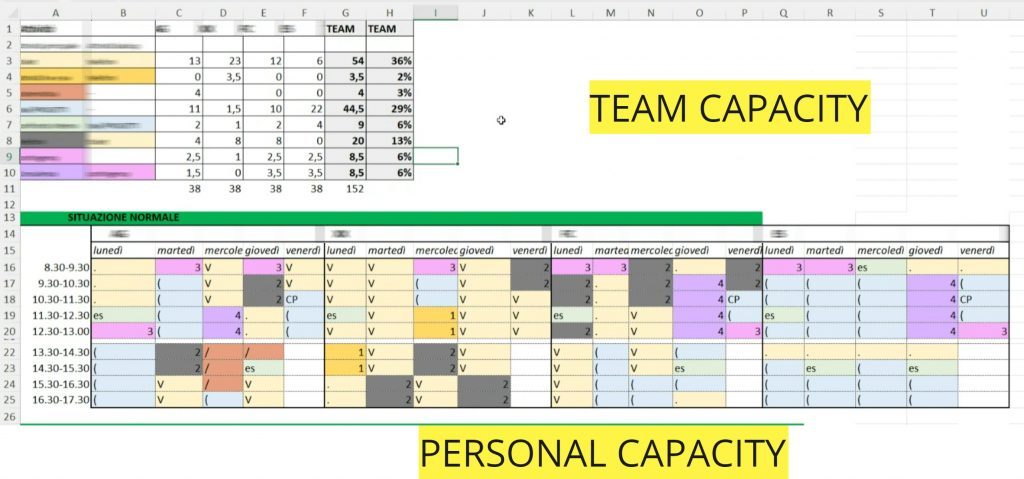I have already introduced in a previous article the practice of Personal Capacity Planning, you can read my previous article here. In this article I’m explaining better how it works, how to get an aggregated view of the team capacity and how to use it to define the workflows WIP limits.
The Personal Capacity Planning practice helps the individuals and the team together to reflect on the fact that the workflow needs WIP limits because the production capacity of the team is limited, and this is because the capacity of each member of the team is limited. This is the reality.

So I start the other way round, asking each member of the team to jot down a guess of their weekly capacity, as if it was a schedule forecast subdivided in slots. Typically then they ask if it is a schedule they have to follow and I invariably reply that no, it is not a schedule, it is only meant to reflect on how they use their time, and more important, to realise than if they don’t keep into account the physical limits to the time they can actually spend on the workflow (or each different workflows they are involved in), the system capability analysis they do e.g. in STATIK turns out to be pure and simple wishful thinking exercise.
I then ask them to aggregate the individual weekly capacity forecast into a team weekly capacity forecast and to start imagine how to split such capacity between the different workflows. Last step is to imagine what limits they need to put on each workflow WIP according to the capacity assigned to the same workflow, because they need to survive and they don’t want to work extra time every week, do they. It can be done within a Team Retrospective or a Flow Review and it comes up something as in the figure (example from IT team).
In my experience this practice has unlocked the use of WIP limits and after a while that they use it, people become glad of its introduction – and we have WIP limits and stable flows.
At higher maturity level I’m still using it in Service Delivery Reviews to help the teams to reflect on how to balance and re-balance workflows adjusting WIP limits as well as to support more advanced practices such as dynamic reservation systems, forecasting simulations and forecasting. It is important by the way to keep reminding the team and underline that it is not intended to be a schedule whatsoever and its purpose is to be a mean to reflect on the actual capability of the workflow system in order to set correct WIP limits.